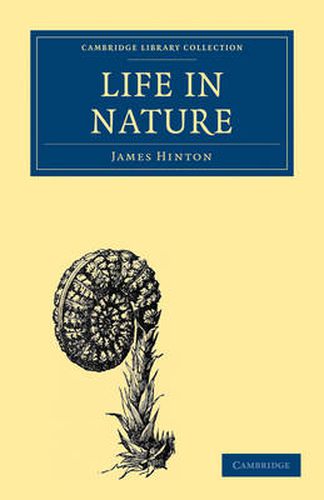Readings Newsletter
Become a Readings Member to make your shopping experience even easier.
Sign in or sign up for free!
You’re not far away from qualifying for FREE standard shipping within Australia
You’ve qualified for FREE standard shipping within Australia
The cart is loading…






Life in Nature, first published in 1862, is a series of papers by the nineteenth-century English surgeon and popular science writer James Hinton. About a third of the material, though revised and reworked for this book, had appeared previously under the title ‘Physiological Riddles’ in the Cornhill Magazine, in which Hinton explained biological phenomena for non-scientific readers. Hinton wrote this thirteen-chapter book to present a concise overview of the human body, informed by the latest scientific insights, that would be more easily intelligible for the general population than the scientific physiological data of his day. His intention was also to demonstrate the similarity between patterns occurring in the organic world and in the rest of nature. This book will be of value to historians of Victorian culture and science as an example of how authors and publishers responded to the growing middle-class interest in scientific discoveries.
$9.00 standard shipping within Australia
FREE standard shipping within Australia for orders over $100.00
Express & International shipping calculated at checkout
Life in Nature, first published in 1862, is a series of papers by the nineteenth-century English surgeon and popular science writer James Hinton. About a third of the material, though revised and reworked for this book, had appeared previously under the title ‘Physiological Riddles’ in the Cornhill Magazine, in which Hinton explained biological phenomena for non-scientific readers. Hinton wrote this thirteen-chapter book to present a concise overview of the human body, informed by the latest scientific insights, that would be more easily intelligible for the general population than the scientific physiological data of his day. His intention was also to demonstrate the similarity between patterns occurring in the organic world and in the rest of nature. This book will be of value to historians of Victorian culture and science as an example of how authors and publishers responded to the growing middle-class interest in scientific discoveries.